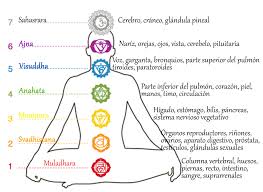Personal Fitness Trainer One-Day Workshop: London
With Scott Bryant
One-Day Personal Trainer Workshop: London
Awhat they should and shouldn’t stretch. You will also learn about the best Posture rebalancing exercises and how to energise and rebalance the chakra system. Scott has 23 years of experience in the fitness industry, studied with the best in the world, has written three different books and recorded 250 podcasts, and is a YouTuber with over 8,600 subscribers. Scott has helped over 300 clients overcome back pain, lose weight, and become the optimal version of themselves. In this one-day seminar, you will learn all the tricks and techniques Scott has used over the years, and you will get a free copy of his book and a program designed for your body’s unique needs. This one-day workshop will take place when Scott has a minimum of 10 confirmed bookings and will be held on Sundays at our London location.
Why should you choose to come to Scott’s one-day seminar?
Scott has a wealth of knowledge with 25 years in the personal fitness trainer industry, and he has studied with the best in the world, Paul Chek, Charles Poliquin, and Gary Gray. Scott has also read over 930 books and delivered hundreds of personal training sessions. In the past 25 years, Scott has been featured on Breeze FM radio, in the Guardian newspaper, and chatted about in Madonna, Yoga Woman’s, and Golfers Magazines. Scott is a book author, 3 of which are self-published.
Scott will help you to understand that while flexibility is needed, not everybody needs the same posture, performance, and alignment to overcome pain and achieve optimum performance. Additionally, he will show you some exercises that are guaranteed to improve posture and performance.
Scott will show you how to rebalance and realign your client’s energy systems, chakras, to balance the body and mind.
What are the chakra systems? The Chakras are part of esoteric ideas and concepts about physiology and psychic centers that emerged across Indian traditions.[22][28] The belief that human life simultaneously exists in two parallel dimensions, one “physical body” (sthula sarira) and the other “psychological, emotional, mind, non-physical” is called the “subtle body” (sukshma sarira).[29][note 1] This subtle body is energy, while the physical body is mass. The psyche or mind plane corresponds to and interacts with the body plane, and the belief holds that the body and the mind mutually affect each other.[5] The subtle body consists of nadi (energy channels) connected by nodes of psychic energy called chakra.[3] The belief grew into extensive elaboration, with some suggesting 88,000 chakras throughout the subtle body. The number of major chakras varies between traditions but typically ranges between four and seven.[3][4] Nyingmapa Vajrayana Buddhist teachings mention eight chakras, and there is a complete yogic system for each of them.
The important chakras are stated in Hindu and Buddhist texts to be arranged in a column along the spinal cord, from its base to the top of the head, connected by vertical channels.[5][6] The tantric traditions sought to master them, awaken and energize them through various breathing exercises or
with the assistance of a teacher. These chakras were also symbolically mapped to specific human physiological capacity, seed syllables (bija), sounds, subtle elements (tanmatra), and in some cases, deities, colors, and other motifs.[3][5][31]
Belief in the chakra system of Hinduism and Buddhism differs from the historic Chinese system of meridians in acupuncture.[6] Unlike the latter, the chakra relates to the subtle body, wherein it has a position but no definite nervous node or precise physical connection. The tantric systems envision it as continually present, highly relevant, and a means to psychic and emotional energy. It is useful in yogic rituals and meditative discovery of radiant inner energy (prana flows) and mind-body connections.[6][32] The meditation is aided by extensive symbology, mantras, diagrams, and models (deity and mandala). The practitioner proceeds step by step from perceptible models to increasingly abstract models where deity and external mandala are abandoned, and inner self and internal mandalas are awakened.[33][34]
These ideas are not unique to Hindu and Buddhist traditions. Similar and overlapping concepts emerged in other cultures in the East and the West, and these are variously called by other names such as subtle body, spirit body, esoteric anatomy, sidereal body, and etheric body.[35][36][30] According to Geoffrey Samuel and Jay Johnston, professors of religious studies known for their studies on Yoga and esoteric traditions:
Ideas and practices involving so-called ‘subtle bodies’ have existed for many centuries in many parts of the world. (…) Virtually all human cultures known to us have some kind of concept of mind, spirit, or soul as distinct from the physical body if only to explain experiences such as sleep and dreaming. (…) An important subset of subtle-body practices found particularly in Indian and Tibetan Tantric traditions and in similar Chinese practices involves the idea of an internal ‘subtle physiology’ of the body (or rather of the body-mind complex) made up of channels through which substances of some kind flow, and points of intersection at which these channels come together. In the Indian tradition, the channels are known as nadi and the points of intersection as cakra.
— Geoffrey Samuel and Jay Johnston, Religion and the Subtle Body in Asia and the West: Between Mind and Body[37]
The seminar is only open to personal trainers, coaches, and exercise professionals who have an open mind and are ready to learn something new that will enhance their Personal Trainer business and help their clients. It costs £250 for the one-day workshop in London.
If you have any questions about Scott’s one-day seminar, please contact him via the Live Chat on the website or email him. Scott is more than happy to talk to you about the benefits of his unique one-day seminar! Call Scott on 07841144878 to book or live chat on home page





